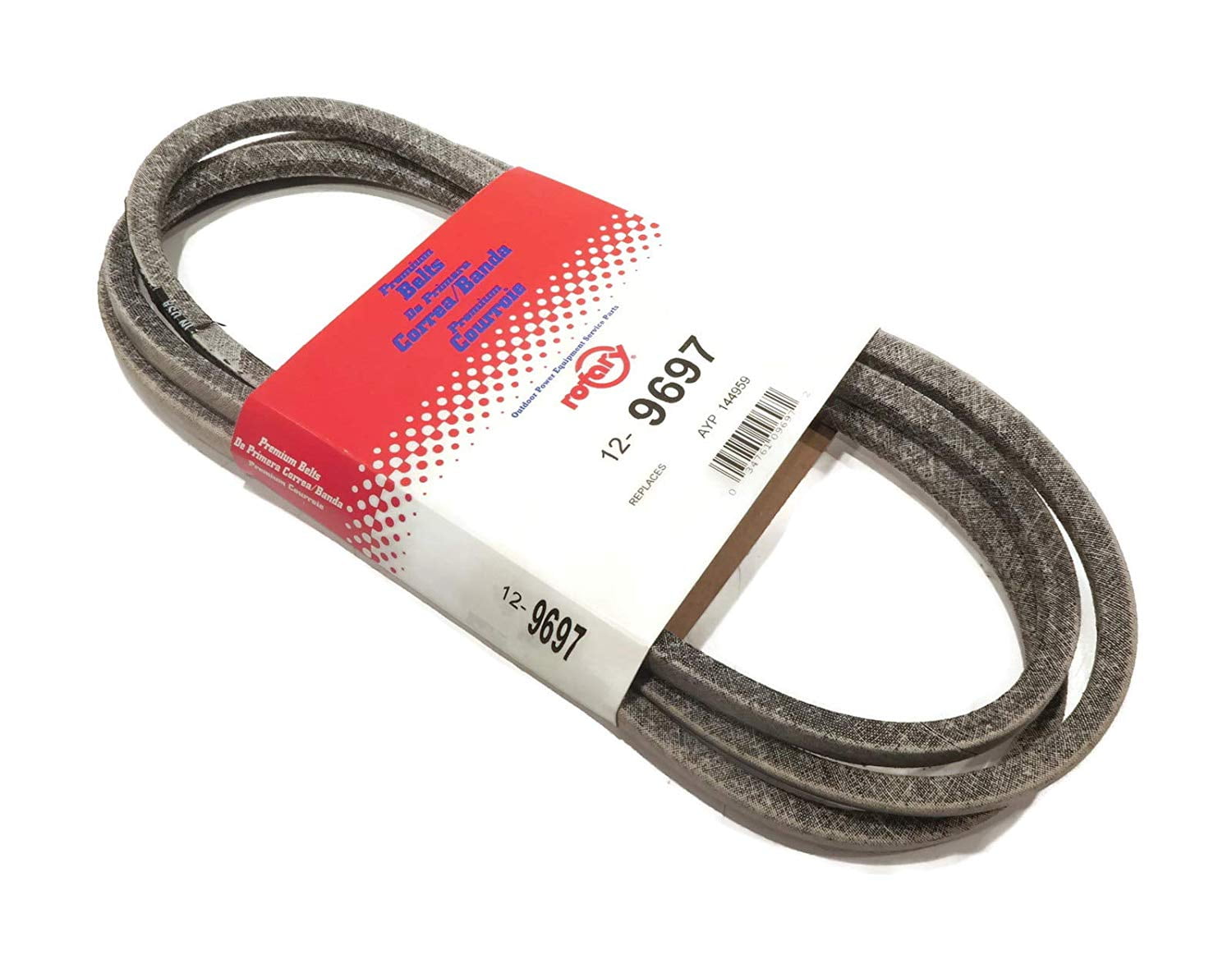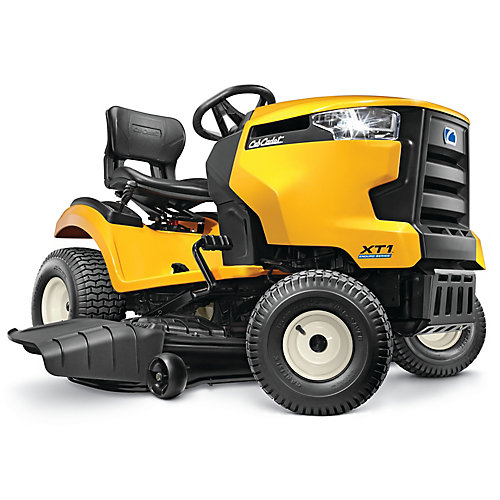Before the advent of electric and self-propelled lawn mowers, there was a time when lawn care entailed the laborious task of pushing a manual, non-motorized mower across the grass. These machines, known as old push mowers, played a crucial role in shaping the history of lawn maintenance and continue to be used today for their simplicity, affordability, and environmentally friendly nature.
Old push mowers are characterized by their reliance on human power to operate. Consisting of a rotating blade attached to a set of wheels, these mowers require the user to apply physical effort to push them forward, engaging the blade with the grass and cutting it to the desired height. While they may not offer the convenience or power of modern electric or gas-powered mowers, old push mowers possess several advantages.
Their straightforward design makes them easy to maintain and repair, requiring minimal technical expertise or specialized tools. Additionally, the lack of an engine eliminates the need for fuel, oil, or spark plugs, resulting in lower operating costs and reduced environmental impact. Furthermore, the quiet operation of old push mowers makes them suitable for use in noise-sensitive areas or at times when minimal disturbance is preferred.
Old Push Mower
In the realm of lawn care, the old push mower stands as a testament to simplicity, affordability, and environmental consciousness. Defining characteristics of these mowers include their reliance on human power, lack of an engine, and straightforward design. Here are four key aspects that encapsulate the essence of old push mowers:
- Manual operation: Requiring physical effort to operate, these mowers promote a sense of self-reliance and physical activity.
- Low maintenance: Their simple design minimizes the need for specialized tools or technical expertise, making them easy to maintain and repair.
- Cost-effective: With no engine or fuel requirements, these mowers offer a budget-friendly option for lawn care.
- Eco-friendly: The absence of an engine eliminates emissions, contributing to a cleaner environment.
These aspects combine to make old push mowers a viable choice for those seeking a sustainable, cost-effective, and hands-on approach to lawn maintenance. Their simplicity and durability have ensured their continued presence in the market, despite advancements in lawn care technology. Whether it’s for small yards, environmentally conscious choices, or simply the satisfaction of self-reliance, old push mowers remain a relevant and valuable tool in the world of lawn care.
Manual operation
Old push mowers stand out for their manual operation, relying solely on human power to function. This characteristic sets them apart from modern electric or gas-powered mowers, offering unique benefits in terms of self-reliance and physical activity.
- Encouraging self-sufficiency: Operating an old push mower is a hands-on task that requires the user to actively engage in the lawn care process. This promotes a sense of self-reliance and accomplishment, as individuals take ownership of their outdoor maintenance.
- Promoting physical activity: Pushing a manual mower involves physical effort, contributing to the user’s overall physical activity levels. Regular use can provide a moderate-intensity workout, particularly for larger lawns, helping to improve cardiovascular health and burn calories.
- Reducing reliance on external resources: Unlike electric or gas-powered mowers, old push mowers do not require fuel or electricity to operate. This eliminates dependence on external energy sources, aligning with environmentally conscious practices.
- Fostering a connection with the outdoors: The manual operation of old push mowers encourages users to be physically present in their outdoor space, engaging with their surroundings and appreciating the beauty of their lawn.
The manual operation of old push mowers not only contributes to a sense of self-reliance and physical well-being but also aligns with sustainable practices. By embracing human power, these mowers promote a more hands-on and environmentally conscious approach to lawn care.
Low maintenance
The low maintenance requirements of old push mowers stem from their simple design, which contributes to their overall practicality and ease of use.
- Composed of fewer components: Unlike electric or gas-powered mowers, old push mowers have a simpler mechanical structure with fewer moving parts. This reduces the likelihood of breakdowns and the need for complex repairs.
- Designed for easy access: Old push mowers are typically designed with accessibility in mind, allowing users to easily reach and inspect various components. This simplifies maintenance tasks such as cleaning, lubrication, and blade sharpening.
- No specialized tools required: Most maintenance tasks on old push mowers can be performed using basic hand tools that are commonly found in households. This eliminates the need for specialized tools or technical expertise, making it convenient for users to keep their mowers in good working condition.
- Durable construction: Old push mowers are often made of sturdy materials such as steel or aluminum, ensuring their durability and longevity. This reduces the frequency of repairs and the need for replacement parts.
The low maintenance characteristics of old push mowers contribute to their overall practicality and cost-effectiveness. Their simple design makes them easy to maintain, repair, and keep in good working condition, reducing the need for professional assistance or expensive repairs, which can be common with more complex lawn care equipment.
Cost-effective
The cost-effectiveness of old push mowers is a significant advantage that contributes to their enduring popularity. Unlike electric or gas-powered mowers, old push mowers do not require an engine or fuel to operate, eliminating the associated costs of purchasing, maintaining, and replacing these components.
The absence of an engine and fuel not only reduces the initial purchase price of an old push mower but also eliminates ongoing fuel expenses. This is particularly advantageous for individuals on a budget or for those who have small to medium-sized lawns that do not require frequent mowing.
Furthermore, old push mowers are known for their durability and longevity, requiring minimal maintenance and repairs compared to their motorized counterparts. This further contributes to their cost-effectiveness, as users can enjoy years of reliable use without incurring significant repair costs.
In summary, the cost-effectiveness of old push mowers is a key factor that makes them a practical and budget-friendly choice for lawn care. Their simple design, lack of engine and fuel requirements, and durability contribute to their overall value and affordability.
Eco-friendly
Old push mowers stand out as an environmentally friendly choice for lawn care. Their lack of an engine eliminates emissions, reducing air pollution and contributing to a cleaner, healthier environment.
- Zero exhaust emissions: Unlike gas-powered mowers, old push mowers do not produce any exhaust emissions during operation. This eliminates the release of harmful pollutants such as carbon monoxide, nitrogen oxides, and particulate matter into the atmosphere.
- Reduced noise pollution: The absence of an engine also makes old push mowers significantly quieter than their motorized counterparts. This can be beneficial in noise-sensitive areas or for individuals who prefer a more peaceful mowing experience.
- Sustainable energy source: Old push mowers rely on human power to operate, eliminating the need for fossil fuels. This reduces our dependence on non-renewable energy sources and promotes a more sustainable approach to lawn care.
By choosing an old push mower, individuals can contribute to a cleaner environment, reduce noise pollution, and promote sustainable practices in their outdoor spaces.
Tips for Maintaining an Old Push Mower
Old push mowers, while simple in design, require proper care and maintenance to ensure optimal performance and longevity. Here are some tips to keep your old push mower in good working condition:
Tip 1: Regular cleaning
Regularly remove grass clippings, dirt, and debris from the mower deck, housing, and wheels. This prevents buildup, ensures smooth operation, and improves cutting performance.
Tip 2: Blade sharpening
Keep the mower blade sharp to ensure clean cuts and prevent tearing or shredding of grass. Sharpen the blade regularly, especially after hitting hard objects or mowing in abrasive conditions.
Tip 3: Lubrication
Lubricate moving parts such as the wheels, axles, and blade bearings to reduce friction and wear. Use a lubricant specifically designed for lawn equipment to ensure proper operation.
Tip 4: Tire maintenance
Check the tire pressure regularly and adjust as needed to ensure proper traction and stability. Replace worn or damaged tires to maintain optimal mowing performance.
Tip 5: Storage
Store the mower in a dry, protected area during the off-season. Clean the mower thoroughly before storage and apply a light coating of oil to metal parts to prevent rust.
Tip 6: Troubleshooting
If you encounter any issues with your old push mower, refer to the manufacturer’s manual for troubleshooting tips. Common problems include difficulty starting, uneven cutting, or excessive vibration.
Tip 7: Professional servicing
For major repairs or complex issues, consider seeking professional servicing from a qualified technician. This can help ensure the longevity and optimal performance of your old push mower.
By following these tips, you can maintain your old push mower in good working condition, ensuring a well-manicured lawn and many years of reliable use.
Conclusion
Old push mowers, with their simple design, durability, and eco-friendliness, continue to hold a place in the world of lawn care. While they may not offer the power or convenience of modern electric or gas-powered mowers, old push mowers provide a cost-effective, sustainable, and hands-on approach to lawn maintenance.
Their manual operation promotes physical activity and self-reliance, while their low maintenance requirements and durability contribute to their long-term value. Additionally, the absence of an engine eliminates emissions, reducing environmental impact and noise pollution.




